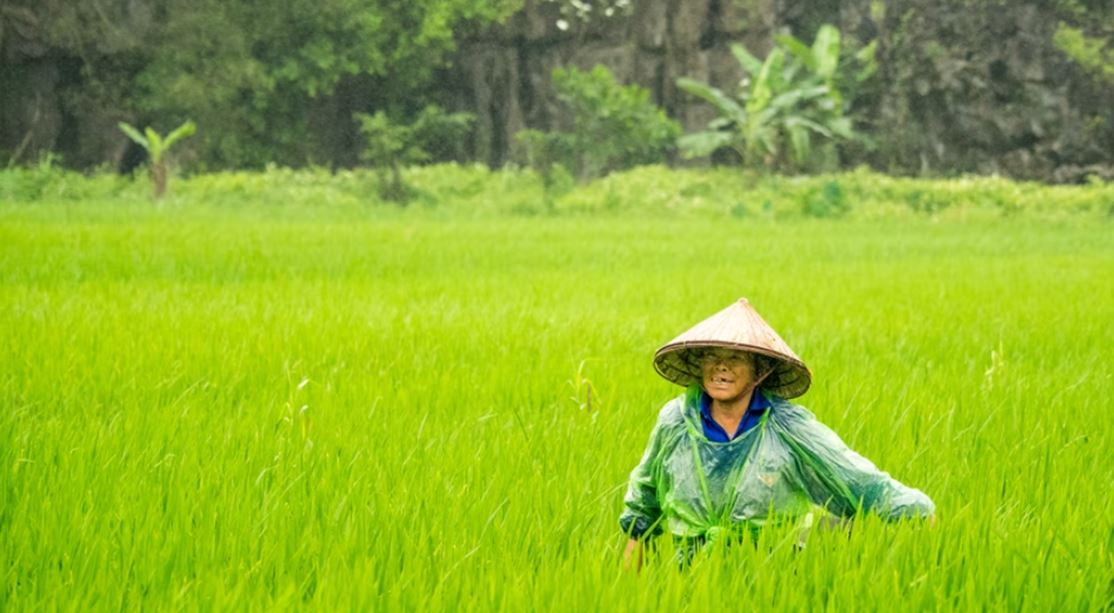Planned rice farming can help you make great profits. However, you can only make your rice farming business successful if you follow the right information. We have listed twelve proven tips in this article to put you on the right track as a rice farmer – keep reading!
1. Choose proper land
The choice of rice fields directly affects the yield of rice crops. Here are some benefits you can enjoy only if you choose the right type of land for rice crops:
- Better weed control
- Recycling of necessary nutrients
- Presence of soft soil mass
- Suitable for direct seeding
Although rice is a resilient plant and can grow in all types of land, rice farmers agree that rice crop yield is higher in swampy lands. It’s therefore recommended to choose swampy land for commercial rice crops.
Here are three steps to identify if swamp land is appropriate for your rice crop:
- Identification of technical and socioeconomic characteristics
- Water management and soil topology
- Selection of agricultural commodities
You will have to spend time and effort to identify if the farmland you choose meets the qualities mentioned above to get maximum yield from your rice crop.
2. Preparation of soil
Soil preparation is an important part of rice farming. Proper rice ensures a higher yield of rice crops and doesn’t require excessive irrigation. Good soil has higher water retention, which helps you save water during irrigation.
It can get difficult for you to decide the right soil type for your rice farm. You can get help from a rice field soil expert to pick the right soil depending on the type of farmland. The next step after choosing the soil is the preparation of soil.
There are two major types of soil preparation:
- Wet preparation
- Dry preparation
A. Wet preparation
The method of wet preparation is adequate for upland and lowland rice fields. An excessive amount of water is needed for this soil preparation technique. Here are the six steps of wet soil preparation:
- Construction of dikes in the field
- Construction of water channels
- Tillage in the field
- Flooding the field
- Secondary tillage in the field
- Leveling of the field
B. Dry preparation
Dry preparation requires less water and is equally suitable for lowland and upland fields. Here are the processes required to create rice paddy through dry preparation:
- Construction of dikes
- Primary tillage
- Secondary tillage
- Field leveling
- Weed control
3. Preparation of farming land
After choosing land and preparing the soil for your rice crop, the next step is the preparation of farming land. The farmland must be in its best condition to produce maximum yield of rice crop. Farming land preparation includes leveling, tilling, and weeding the farm.
Remember that rice land can be prepared for any climate if you plant the seeds at the right time.
4. Choose the right time for the plantation
Rice crop yield depends on the time you plant the seeds. Choosing the right time for plantation ensures that you don’t run into rice farm management problems and can maximize the crop yield with minimal effort.
The type of seed plantation you choose dictates when you have to plant the seeds. For example, the plantation time differs if you prefer “direct seeding” over “rice plantation.” Time of planting is also linked to the level of moisture in the soil.
The ideal time for rice plantations differs from one area to the other. According to general consensus, rice cultivation should start in May as the expected rainfall can have better effects on the crop, but the rain cycle is different in different areas.
5. Prepare the seeds
Choosing the right type of seeds for your crop can increase the yield from 5% to 20%. You should pick the most appropriate form of seeds depending on your area to get a higher yield.
After choosing the seeds, you should ensure that the rice seed germination process goes smoothly. Insects like rice seed midges can feed on germination seeds. Birds can also disturb the germination of rice seeds. Using the right chemicals can help you avoid damage done to the seeds by insects and birds.
6. Manage your farm
Proper management in your rice farm is important to maximize the yield of your rice crop. Mismanagement can lead to increased attacks by pests which can destroy your rice crop in no time.
Management of your rice crop can get easier if you build a team. Hire skilled people who know how to manage a rice crop and divide responsibilities among them equally.
An important part of rice crop management is to avoid false information. Only get information from reliable sources so you can keep your rice crop intact.
7. Protect the rice fields
Protection of the rice fields is necessary to help you get maximum rice crop yield and save your time, money, and effort from getting wasted. The four important types of crop protection are:
- Weed control
- Insect control
- Disease control
- Seed treatment
8. Use the right fertilizers
Depending on your soil choices and the type of farmland, you might have to use fertilizers for your rice crops. Proper fertilizers ensure that all necessary nutrients are present in soil and rice plants are not deprived of nutritional value – improving the yield of your rice crop as a result.
The most recommended fertilizers for rice crops are:
- Nitrogenous fertilizers
- Phosphorus fertilizers
- Potash fertilizers
You will have to learn when and how you should use fertilizers. If you don’t know about fertilizers, it’s better to get expert advice about fertilizer administration.
9. Scout your rice fields
Many tech tools have now been introduced to make it easier to monitor rice fields. However, you should not forget that scouting can help you identify and fix the problems in your rice field so you can get a higher crop yield. You should follow the basics of scouting in rice fields if you haven’t done it yourself in the past.
10. Harvest properly
Harvesting is the process of taking the ready crop and preparing it for the market. You should pick the right harvesting strategy based on your climate and farm requirements to keep the crop intact during harvesting.
Rice harvesting can be divided into manual and mechanical harvesting. Manual harvesting takes longer to complete because simple hand tools are used. On the other hand, mechanical harvesting makes use of the latest harvesting machines and gets harvesting done in a short period.
11. Prepare the crop
The drying process takes place after harvesting the crop. Without proper drying, rice grains can lose their quality. Moisture in rice grains can damage the rice crop, so it’s important to let the crop dry right after harvesting is complete.
The easiest way to dry the rice crop is to put grains under direct sunlight. Proper supervision is required in rice drying to keep the crop intact from pests and other environmental factors.
12. Market your products
Marketing your rice crop can help you generate better profits. Keep in mind that running an ad on TV is not enough to help you find better customers for your crop. A rice marketing campaign involves a comprehensive approach to reaching your target audience through proper channels.
It can be difficult for you to implement and devise a marketing strategy if you have not worked on a similar project in the past. You can get help from a trusted rice marketing guide to get started.







